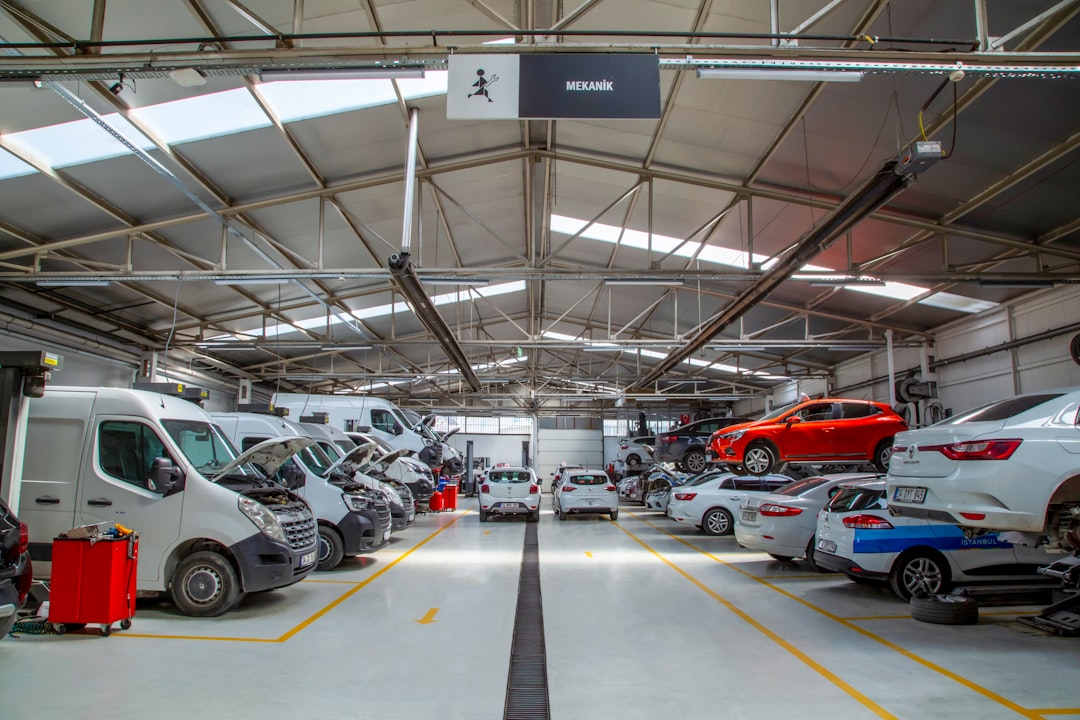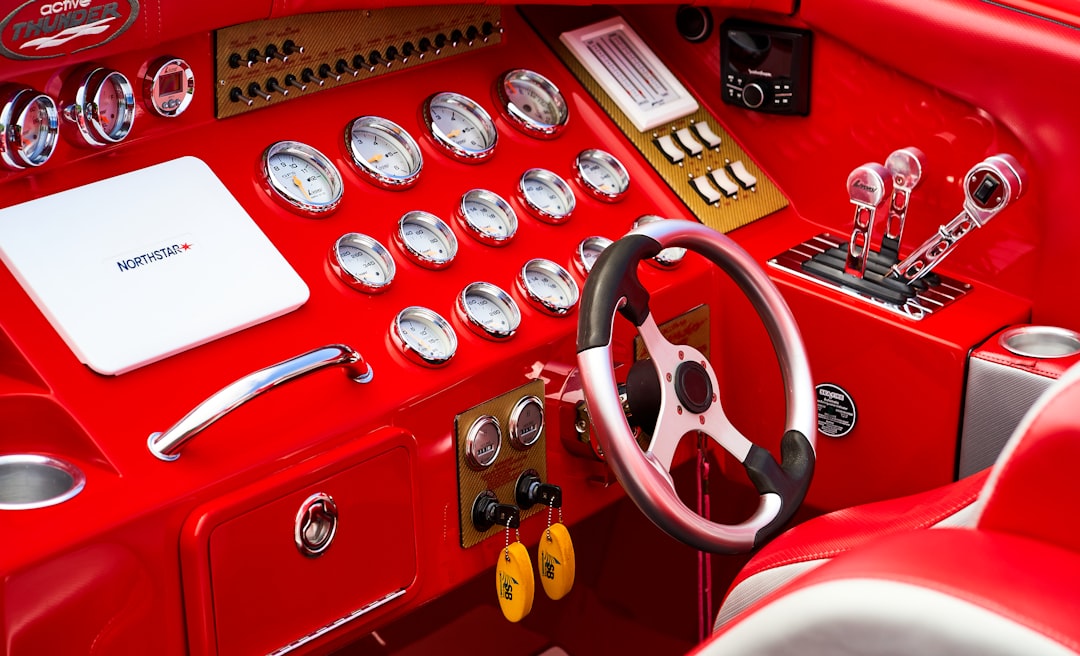

Engage prospects with a scan and streamline customer engagement with FREE QR code marketing tools by Sona – no strings attached!
Create a Free QR CodeFree consultation

No commitment

Engage prospects with a scan and streamline customer engagement with FREE QR code marketing tools by Sona – no strings attached!
Create a Free QR CodeFree consultation

No commitment
Today’s automotive equipment suppliers face mounting pressure to modernize business operations and meet rising customer expectations. As the industry accelerates into a new era of digitization, companies must connect physical interactions such as on-site visits, warehouse lookups, and showroom conversations to robust digital engagement and data-driven workflows. Relying on paper forms, static catalogs, or disconnected product information limits visibility and growth. It also leaves high-intent touchpoints untracked when prospects are not captured in the CRM.
QR codes provide an immediate, low-cost solution. With a quick scan from any smartphone, these codes transform physical assets into live gateways for real-time intelligence and instant action. Automotive parts distributors, equipment providers, and production teams can leverage QR applications to bridge analog processes with digital enablement. Whether the use case is frictionless part lookups, instant product registrations, technician feedback collection, or IoT-driven diagnostics, QR codes help suppliers capture crucial engagement signals that would otherwise remain invisible. This unlocks operational efficiency, faster sales cycles, and deeper customer relationships.
With a thoughtful strategy, automotive equipment suppliers can use QR codes to address data gaps, streamline workflows, and keep CRM records current. By making every warehouse shelf, product label, bin, and service document a data-rich entry point, suppliers empower teams and customers with seamless access while gaining insights that drive measurable business growth. Platforms like Sona QR give suppliers the ability to create dynamic QR codes, update destinations without reprinting, and attribute scans to revenue using Sona analytics and CRM integrations.

Fragmented processes and disconnected records can slow access, frustrate technicians, and cause missed sales opportunities. Modern QR technology closes the loop between physical moments and digital workflows. The outcome is faster self-service for customers and field teams, fewer manual errors, and a clean flow of engagement data into your systems of record.
Start by identifying where analog friction is costing you time or revenue. Printed catalogs that go out of date, paper warranty cards that never get returned, manual order entry that leads to errors, and phone-based support that does not track intent are all prime candidates for QR-driven transformation. Replace those steps with scans that lead to dynamic product data, order forms, or support flows tied to your CRM.
Strategic QR deployment means every scan becomes a captured touchpoint. With the right setup, anonymous engagement signals turn into CRM contacts, service records, and attributed revenue. Sona QR supports this with dynamic codes, destinations that can be updated post-print, and integrations that sync scan behavior with HubSpot, Salesforce, or other tools. As a result, your team moves from reactive to proactive while your data quality improves across the board.

Key inventory and sales interactions often happen far from digital channels, which can lead to missed opportunities and incomplete visibility. QR codes transform physical inventory, packaging, collateral, and equipment into actionable, data-rich touchpoints that capture intent at the source.
Benefits include:
Consider common materials in this sector such as pick tickets, invoices, catalogs, price sheets, and installation manuals. When these include QR codes, customers can jump directly from a paper surface to a digital flow. That means fewer abandoned tasks, better attribution, and a more modern experience that aligns with how technicians and buyers prefer to work.

QR codes support multiple formats to match your goal. For auto equipment suppliers, the most useful types are those that drive product knowledge, reorders, and support actions in real time.
With Sona QR, you can generate any of these formats in one place and switch destinations later without replacing labels. Dynamic codes are recommended for most operational and marketing cases since you can track scans, update destinations, and route users based on language, role, or device.
Growth is often constrained by disjointed processes and missed engagement signals. QR codes can be embedded into existing materials to unlock measurable impact with minimal disruption.
Even existing print assets can become engines of engagement. Apply QR stickers to legacy catalogs, reprint labels for high-volume SKUs, and add codes to fleet vehicles or service vans. Each scan lights up a previously dark spot in your funnel.

These use cases improve data quality, responsiveness, and the ability to track last-mile engagement. As suppliers layer QR codes across operations, they gain a more accurate picture of product adoption, field challenges, and upsell timing.
Each QR scan is a signal that reveals intent, context, and timing. By deploying tailored codes across the customer journey, you can segment audiences automatically and use that data to fuel precise retargeting, sales outreach, and service automation.
In auto equipment supply, it is useful to distinguish between end buyers such as fleet managers, channel partners such as garages, and internal roles such as parts managers or technicians. Scans can reveal the role and context, which you can use to tailor offers. For example, technicians who scan installation guides can be nurtured with tips, while procurement managers who scan pricing sheets can receive volume discount programs.
QR codes connect offline and online assets for seamless omnichannel marketing. When coordinated within one platform, they help you attribute performance across channels that were once hard to measure.
QR codes serve as the offline onramp to your digital marketing engine. With a centralized platform like Sona QR, you can manage codes across channels, monitor performance in one dashboard, and sync scan data to your CRM and ad platforms. This creates a connected funnel that moves prospects from first glance to post-sale service with measurable continuity.
QR campaigns succeed when they pair clear business goals with precise placements, strong CTAs, and measurable outcomes. Use this checklist to plan, launch, and optimize.
Develop a narrow, testable objective such as speeding up scan-to-reorder on high-turn SKUs or capturing warranty registrations for a new product line. Align each use case with a business metric such as time-to-order, registration rate, or repeat purchase lift. For example, add QR codes to bin labels in the brake category and aim to reduce reorder time by 30 percent within a month.
Be specific about audience and context. A QR code on a technician tool cart should route to support and quick tips, while a code on packaging might route to video tutorials and registration. When you decide the outcome in advance, you can create a destination that delivers it.
Static codes are suitable for evergreen content such as a generic catalog PDF, but they cannot be updated or tracked at a granular level. Dynamic codes let you change destinations post-print, apply UTMs, and view scan analytics by asset. For anything that requires optimization or attribution such as reorders, events, or promotions, choose dynamic codes with Sona QR so you can iterate without reprinting. Start creating QR codes for free.
Consider security and governance. Use role-based access to manage who can edit destinations and who can view analytics. For sensitive flows such as returns or service diagnostics, ensure your QR platform supports HTTPS links and privacy by design.
Design for contrast, size, and distance. Ensure a quiet zone around the code, use high contrast to improve scannability, and size appropriately for expected scan distance. Add a benefit-driven CTA such as Scan for live stock or Scan for torque specs. Include your logo and brand frame so the code feels trustworthy.
Test in the field under real lighting and angles. Verify that labels survive warehouse dust, oil, or UV exposure. Laminate or use industrial-grade stickers where needed. Test with multiple smartphones and camera apps, and confirm that the landing page loads quickly and is mobile friendly with prefilled data when possible.
Start where the payoff is highest. Common high-impact placements include shelf and bin labels for top movers, packing slips for returns and reorders, invoices for feedback and upsells, and demo equipment on the trade show floor. Position codes at eye level or closer to the action so scanning is natural during the task.
Ensure each placement has a context-specific destination. Shelf codes should prioritize inventory and compatibility. Delivery slip codes should lead to missing item reports or instant reorder. Equipment codes should route to manuals and service tickets. Train staff to reference and promote the codes during daily workflows.
Instrument each code with UTM parameters and unique identifiers. Use Sona QR to track scans by time, device, and location, then connect Sona.com to attribute scans to pipeline and revenue. Monitor conversion behaviors such as form completion or reorder submission and identify drop-off points.
Optimize weekly. Adjust destinations, CTAs, or offer copy. A/B test alternative landing pages such as a short form versus click-to-call. Retire underperforming placements and double down on codes that drive orders and registrations. Feed insights into your merchandising, pricing, and training plans.
QR codes are not just a convenience. They are a measurable pathway from physical engagement to digital outcomes. For auto equipment suppliers, that means proving how scan behavior lifts reorders, registrations, support efficiency, and revenue.
Advanced QR platforms allow:
With Sona QR and Sona.com, suppliers can track every scan, enrich CRM records, resolve identities when possible, and attribute revenue across buying stages. Sona’s Buyer Journeys connect QR scans with website visits, email engagement, and sales activities to show progression from first scan to reorder or equipment purchase. This provides the evidence you need to scale what works and sunset what does not.
Small execution details have an outsized impact on scan rates and ROI. Focus on clarity, context, and continuity from scan to action.
You can generate and track your first dynamic codes in minutes with Sona QR, then expand based on what your analytics reveal.

These examples highlight how QR codes bridge analog interactions with digital outcomes. They show how to reduce friction in critical workflows, generate measurable lift in engagement and revenue, and capture the insights needed for continuous improvement.
By adopting QR-driven strategies, automotive equipment suppliers can close the gap between analog interactions and digital outcomes. When QR codes become part of supply chain, sales, and marketing operations, every surface can become a digital entry point and every moment of interest can become a moment of action. With Sona QR as your orchestration layer and Sona.com for attribution, you can capture demand at the source, connect it to revenue, and scale what works with confidence.
QR codes have transformed the auto equipment suppliers industry from static product catalogs into dynamic, measurable engagement channels. Whether it’s streamlining customer access to detailed equipment specs, enabling instant service requests, or enhancing product demonstrations, QR codes replace outdated processes with seamless, mobile-friendly interactions that capture real-time data to optimize every touchpoint.
Imagine instantly knowing which equipment details or service offers spark the most interest among your customers—and being able to update that information on the fly without costly reprints. With Sona QR, you can create dynamic, trackable QR codes in seconds, monitor engagement, and connect every scan directly to sales opportunities. No wasted materials, no missed leads—just smarter, more effective customer connections.
Start for free with Sona QR today and turn every scan into a step toward stronger relationships and increased revenue.
QR codes enable real-time access to product information, streamline workflows, improve data capture for CRM, reduce manual errors, and enhance customer engagement leading to operational efficiency and faster sales cycles.
Suppliers can digitize analog processes by linking QR codes to live product data, order forms, and support flows, track scan activity for insights, update content dynamically, and integrate scan data with CRM to optimize sales and service.
Sona QR and Sona.com are leading platforms offering dynamic QR code creation, analytics, and CRM integrations tailored for automotive equipment suppliers.
Trends include dynamic QR codes on inventory labels, packaging, delivery slips, and trade show materials that enable live product lookups, registration, IoT diagnostics, and seamless offline to online engagement.
Look for suppliers that adopt modern digital tools like QR code platforms such as Sona QR, which provide traceability, real-time updates, and integrated data insights to support efficient and transparent operations.
Use Sona QR's trackable codes to improve customer acquisition and engagement today.
Create Your FREE Trackable QR Code in SecondsJoin results-focused teams combining Sona Platform automation with advanced Google Ads strategies to scale lead generation

Connect your existing CRM

Free Account Enrichment

No setup fees
No commitment required

Free consultation

Get a custom Google Ads roadmap for your business






Launch campaigns that generate qualified leads in 30 days or less.
